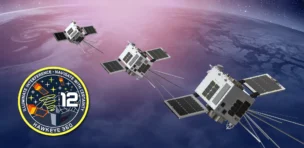Deep space exploration isn’t just for governments anymore.
Industry has been taking up the reins of space exploration from governments for decades. Industries like remote sensing, lunar exploration, and space station construction—all historically government-owned, science-focused initiatives—have shifted into the commercial market as companies have realized their potential to turn a profit. Now, the rapid development and low-cost ethos that drives the space industry is coming for planetary science.
“A private company going to another planet for some tens of millions of dollars to look for life—I think that’s kind of a mind shift…and a shift in exploration of our solar system,” Peter Beck, CEO of Rocket Lab, told Payload. “It can be done not with billions of dollars in front of it, and governments in front of it. It can be done with a relatively small amount of capital by a group of enthusiasts.”
Rocket Lab announced last year that it had partnered with MIT to take on the first private mission to study Venus, which will look for signs of microbial life in the clouds. The team planned to build the system cheaply and quickly by NASA standards—the original goal was spring 2023, but it’s since been pushed to the next launch window, which opens in the last few days of 2024.
Rocket Lab isn’t going to be turning a profit on this mission. Instead, the commercial justification for the mission is in proving what Rocket Lab’s launch stack is capable of, so that it’s qualified to win lucrative government contracts in the future.
“If you can go to Venus, if you can demonstrate you can go to Venus with a system, then that system becomes very valuable,” Beck said.
Where it began
In 2020, a group of planetary scientists including Sara Seager and her lab at MIT made a finding that reverberated through space science circles. While observing the high-altitude clouds of Venus, the team identified phosphine—a molecule that, on Earth, indicates the presence of anaerobic life.
At the time of the finding, Beck said, Rocket Lab was already looking into pursuing a mission to Venus—the planet had captured his interest since he was young—but once MIT made that announcement, it facilitated an agreement between the two organizations.
The discovery of phosphine ignited a long-dormant interest in sending science missions to Venus, which had long been passed over in favor of exploring Earth’s other next door neighbor, Mars.
After MIT began its concept study for this mission, NASA announced two missions of its own: DAVINCI, slated for launch in 2029 to explore Venus’ atmosphere, and VERITAS, currently expected to head to the planet in 2031 to study its surface and core, though it has faced budget pressure on Capitol Hill. ESA also announced it’s looking to launch its EnVision orbiter in 2031.
A decade is a long time to wait, but it’s not uncommon for planetary scientists to wait that long or longer for a mission to launch.
But one thing the commercial sector’s got over a traditional government program? Speed.
Can’t begin to know
In the US, NASA is the historical gatekeeper of space science. It designs the interplanetary probes, pays for the big fancy space telescopes, decides who gets observation time, and when, and for how long. It’s a system that has done pretty well over the years.
But NASA faces pretty strict limitations from Congress on the science it’s able to do.
- JWST was one of these flagship projects, costing $10B over the 20+ years it took to develop the telescope.
- The need for major, capital-intensive projects like these is unlikely to wane, but it’s also not the only way to get science done.
- Budget restrictions on the in-between missions often require NASA to make trade-offs—for instance, the agency had to delay its VERITAS mission to Venus to make funding available for its Psyche asteroid probe mission.
“I think there is a real opportunity in the market for these incremental little missions in between, just to kind of set the stage for these big decadal missions, and I think that’s the one thing that’s really missing,” Beck said.
Keeping science costs down: Getting things done quickly and cheaply comes with a tradeoff. “One of the reasons that it can be low cost and fast is it’s got to be as simple as possible,” Seager, head of the MIT part of the collaboration, told Payload.
MIT is responsible for funding and building the science instrument that will sample droplets in the Venusian atmosphere. A Rocket Lab-built probe containing the instrument will separate from the cruiser, then descend through the atmosphere for about five minutes using a laser to suss out the presence of organic molecules in the clouds. It is designed to withstand the environment down to an altitude of ~20km, at which point the probe will disappear into the hellish environment beneath the clouds.
The process for fundraising has been unconventional, to say the least.
“First we had no money. We were just volunteering. We had a tiny amount of money to give to our instrument builder for a concept study to hammer out a prototype. And then we had to get the money from the MIT alums to build the instrument. Then we got actual real money, like enough money to redesign and rebuild the instrument,” Seager said. “In science we don’t usually operate that way.”
On to launch: Last year, Rocket Lab supplied launch services on Electron and a modified Proton capsule for NASA’s CAPSTONE pathfinder mission, which tested out a unique orbit around the Moon for the future Gateway space station at a price point of ~$30M. The Venus mission is using essentially the same mission architecture it built for CAPSTONE, with some modifications so it can cruise for longer through space and send a probe through the Venus atmosphere.
Beck said that if an external agency wanted to contract a science mission with this system in the future, the cost would be in the same ballpark as CAPSTONE, at tens of millions. For this mission, though, he said the cost will be significantly lower.
“We’re not running off and spending tens of millions of shareholders’ dollars on a science project, that’s for sure,” Beck said.
Going strong
Rocket Lab isn’t earning any revenue on this mission—it wasn’t even really in the cards, according to Beck, who describes it as a “nights and weekends project,” pulled together from scraps of past missions. The commercial benefit could instead come from proving to government funders that missions of this magnitude are possible to do quickly and at low cost.
“We do believe that this will create a new business line for us at the end of it,” Beck said.
Innovation in the space industry over the last decade has slashed the cost of sending satellites to orbit, shifting the paradigm of what companies can accomplish in space for their investment. It’s only a matter of time, this mission seems to indicate, before that cost and speed benefit reaches science too. Lower-cost interplanetary probes and deep space missions with drastically lower lead times between concept and execution could completely change the way planetary scientists approach mission design and data collection in our solar system.
“I would just love to see a world where visiting our near neighbors is not is not some decadal or massive kind of thing. It’s much more frequent,” Beck said. “The science goals are smaller, for sure, but certainly very valuable.”




